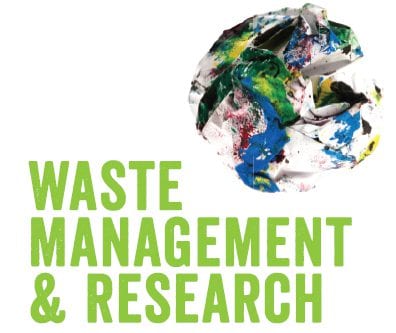ISWA’s monthly journal “Waste Management & Research: The Journal for a Sustainable Circular Economy” (WM&R) aims to meet the growing demand for new and scientific information produced by waste management professionals in academia, government, industry, planning, engineering, management and operations.
The latest Editor’s Choice article from WM&R, “Impact of utilizing solid recovered fuel on the global warming potential of cement production and waste management system: A life cycle assessment approach” (Khan et al., 2021), addresses how production and use of the combustible fraction of solid waste in the manufacturing of Portland cement can help reduce both the volume of wastes going to landfills and the emission of greenhouse gases. The article is free to read here.
The paper presents a life cycle analysis of the use of solid recovered fuel (SRF, also known as refuse derived fuel, RDF) as a source of energy to produce Portland cement. In 2000, global carbon dioxide (CO2) emissions from cement production were approximately 829 million metric tons of CO2, accounting for about 3.4% of global CO2 emissions from fossil fuel combustion and cement production. So the substitution of SRF (produced from the combustible fraction of solid waste) for fossil fuel offers an opportunity for reducing emissions from both combustion of fossil fuels and fugitive biogas if the SRF is diverted from disposal in landfills.
For this study commercial and industrial waste (C&IW) is the source of SRF. The researchers conducted a life cycle assessment (LCA) based on the production of 1 metric tonne of cement and treatment of 194 kg of C&IW. Data from an existing cement plant were used, where the share of SRF from total fuel energy demand increased from 0% to 53% between 2007 and 2016, based on four scenarios.
It was found that GHG emissions decreased by 20%, from 1,036 kg CO2, equivalent (eq.) (functional unit)-1 in Scenario 1 to 832 kg CO2, eq. (functional unit)-1 in Scenario 3. The study also indicates the potential for achieving a reduction of 30% [to 725 kg CO2, eq. (functional unit)-1] by increasing the share of SRF to 80%. The researchers conclude that significant GHG emission reductions are possible by utilizing SRF in cement production. Especially in middle- and low-income countries where solid waste is typically dumped in uncontrolled landfills, emissions could be reduced without major investments in waste-to-energy plants.
David Ross, Associate Editor, WM&R
Reference:
Khan, M. M. H., Havukainen, J., & Horttanainen, M. (2021). Impact of utilizing solid recovered fuel on the global warming potential of cement production and waste management system: A life cycle assessment approach. Waste Management & Research, 39(4), 561–572. https://doi.org/10.1177/0734242X20978277




